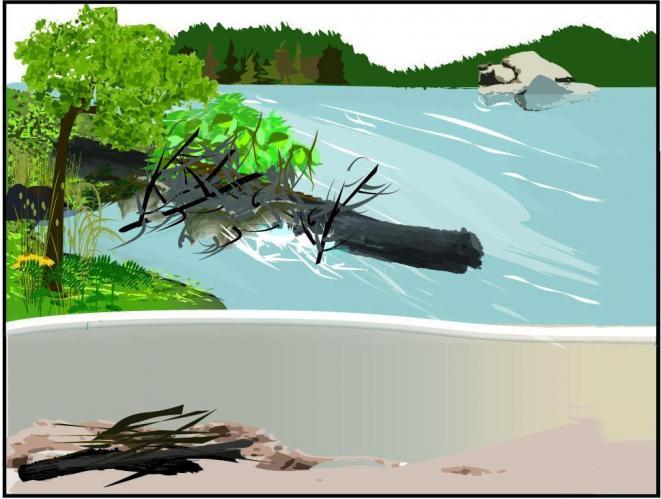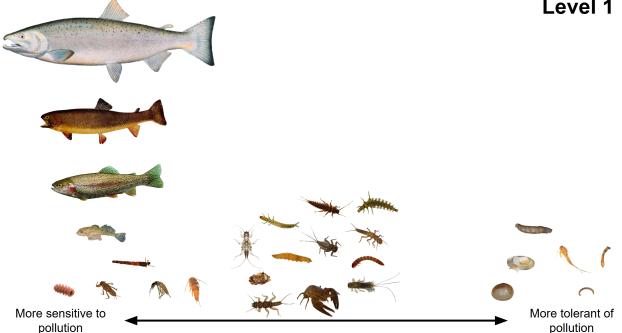Grantee Research Project Results
2024 Progress Report: Valuing Water Quality Improvements in Nationwide Ecosystems: Total Value Based on the Biological Condition Gradient
EPA Grant Number: R840465Title: Valuing Water Quality Improvements in Nationwide Ecosystems: Total Value Based on the Biological Condition Gradient
Investigators: Phaneuf, Daniel J. , Vossler, Christian , Finlay, Jacques C , Keiser, David A , Kling, Catherine L
Institution: University of Wisconsin - Madison , Cornell University , University of Minnesota , University of Massachusetts Amherst , University of Tennessee -Knoxville , Iowa State University
EPA Project Officer: Packard, Benjamin H
Project Period: September 1, 2022 through May 2, 2025
Project Period Covered by this Report: September 1, 2023 through August 31,2024
Project Amount: $741,864
RFA: Water Quality Benefits (2022) RFA Text | Recipients Lists
Research Category: Water Quality , Water
Objective:
In this research we are pursuing four overarching project goals related to holistically valuing surface water quality in the US. The first is to expand our assessment of baseline biological condition gradient (BCG) conditions to a nationwide scale. This in turn enables us to adapt our existing BCG and SP survey instruments to measure and compare total values for major ecoregions across the country, including regions that are underrepresented in the body of prior valuation research. Third, to enhance our understanding of the relative magnitudes of use and non-use values, we supplement the SP estimates of total value with revealed preference (RP) recreation demand estimates. Finally, we incorporate a nationwide BCG valuation module into our ongoing Integrated Assessment Model (IAM) development work that aims to provide broadscale water quality valuation capabilities.
Progress Summary:
Our project consists of six objectives. The following were the focus during the second year of the project:
- Objective 1 (Assemble BCG Data): Assemble data and develop models needed to measure baseline BCG levels at the 8-digit hydrological unit code (HUC8) in our study and policy simulation regions.
- Objective 3 (Communicate Water Quality): Design communication and presentation strategies for translating ecological concepts specific to BCG levels in our set of river basins into commodity descriptions suitable for use in SP surveys.
- Objective 5 (RP Data): Construct an auxiliary data gathering module that enables assembly of RP recreation data in conjunction with the SP data or as a standalone survey vehicle.
During the reporting period we completed assembling the biological data and assigned BCG scores to 8-digit watersheds across the landscape (objective 1). To accomplish these team members:
- Completed assembling 80,185 biological indicator samples taken at 60,778 sample sites during 2000-present.
- Summarized, cleaned, and archived these data for project and later use.
- Computed BCG scores for each of the sample sites.
- Conducted data summary and analysis to produce BCG scores at the watershed level across the landscape.
These steps allowed us to complete the project tasks for objective 1. The following map on the right shows the distribution of average BCG scores in watersheds across the contiguous US for HUC8s with at least one sampled location:
During the reporting period we also made progress on designing materials for lay accessible description of the six BCG levels in ecoregions across the country (objective 3). As part of this we:
- worked with a graphic designer to construct prototype images of streams in the Northwest, South, Northeast, and Southwest ecoregions in a natural (BCG level 1) state.
- coordinated work between the designer and project ecologists to construct ecoregion-specific graphics showing the visual gradient from BCG level 1 (natural state) to BCG level 6 (extreme degradation).
- coordinated work between the designer and project ecologists to represent aquatic species abundance and composition for each BCG level in each ecoregion.
The graphics below illustrates example BCG level 1 in the US Northwest ecoregion, with a corresponding species abundance and composition indicator.
Finally, we made progress designing an online survey module for gathering records on water-based recreation trips (objective 5). For this we worked with a vendor to design a trip elicitation protocol that integrates with our online surveying platform, and which is dynamically tailored to the survey respondent’s location. Through this protocol users can interact with a tailored map to record lakes that they visited in a reference timeframe. The following image is a screenshot of the prototype survey, whereby a survey taker who indicated visiting a lake near Madison, WI, is presented with a map showing nearby lakes and is prompted to click to indicate which was visited.
Future Activities:
During year 3 of the project we will focus on designing and fielding our SP and RP surveys and conducting analysis, according to objectives 4, 5, and 6:
- Objective 4 (SP Survey): Field a large scale, online SP survey that focuses on our nationwide sample of watersheds and implements our BCG-L valuation approach across ecologically and socio-economically diverse locations.
- Objective 5 (RP Data): Construct an auxiliary data gathering module that enables assembly of RP recreation data in conjunction with the SP data or as a standalone survey vehicle.
- Objective 6 (Benefit Estimation): Use our SP and RP data to construct benefit functions to represent use-based and total values for changes in aquatic ecosystem quality at locations across the country, conditional on household characteristics.
References:
nonmarket valuation, stated preference, Biological Condition Gradient
Progress and Final Reports:
Original AbstractThe perspectives, information and conclusions conveyed in research project abstracts, progress reports, final reports, journal abstracts and journal publications convey the viewpoints of the principal investigator and may not represent the views and policies of ORD and EPA. Conclusions drawn by the principal investigators have not been reviewed by the Agency.




